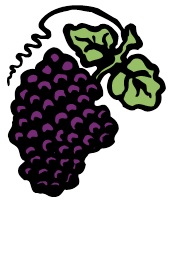 Growing Grapes - January 1, 2014 Jeff Schalau, Agent, Agriculture & Natural Resources University of Arizona Cooperative Extension, Yavapai County Grapes can be grown in most areas of Yavapai County. The sweet summer harvest is an excellent payoff for the amount of effort needed to produce this crop – a healthy vine can produce 10-12 lbs of fruit. Once in a while, we can get a late spring frost that kills the fruit blossoms. If a frost does kill the fruit blossoms, grapes are often capable of producing a second bloom. Finding the best site for grapes is similar to that for deciduous fruit trees. They prefer: abundant sunlight; deep, fertile, well-drained soils; and a slight slope (preferably south facing) to drain cold air on chilly nights. Grape vines should be planted 6 to 8 feet apart and will need support of some kind. Backyard gardeners often use old-fashioned wooden arbors or the more economical wires stretched between metal fence posts. Grape vines are usually purchased as small bare root plants. At planting, they should be pruned back to two buds per vine. Damaged roots should be pruned at the time of planting. It is important to keep roots moist at all times before and during planting. Planting holes should be wider and deeper than the root system. Spread the roots evenly over a low cone of soil sighting the plant so that it will be at the same soil height as it was when growing at the nursery. Cover the roots with native soil (not amended soil) and bring the finished grade up to the aforementioned planting height. After planting, mulch the vines with compost, well-rotted manure, straw, hay, or leaves to conserve soil moisture. First year care is critical to grape vine establishment. Irrigate newly planted grapes often enough to keep soil moist but not waterlogged. Do not fertilize grape vines during the first year. The roots are tender and easily burned. Weed control is also important because competition for resources will slow growth. Newly planted vines should be pruned back to one cane with only two buds. During the first growing season, stake the plant and leave the stake until the trunk can stand without support. Do not allow vines to produce fruit the first year after planting. Grow tubes (available from on-line suppliers) should be used to protect young vines where rabbits, woodrats, voles, or squirrels are present. Select the most vigorous cane and prune off the other closely. Once the cane reaches 60 inches (or the training wire), cut back to 40-50 inches to promote branching below the cut. These two lateral branches should be tied to the wire in opposite directions, each forming a cordon. Remove all flower clusters in year two. During the first dormant season, select four lateral canes near the top and prune off all others. The four remaining canes should be pruned back to two buds. These will develop into fruiting canes. Mature grape vines should be pruned yearly during the dormant period for maximum yields and maintenance of good growth form. To prune, select two vigorous canes near the top of the plant and two farther down. Next to each of these, choose another cane and cut it back to two buds (these are renewal spurs). After selecting four canes and renewal spurs, cut off all others closely. Finally, prune the remaining four canes back to 8-15 buds. These will produce fruit the following year. During the next dormant season, remove the fruiting canes from the previous year and follow the same procedure. Grapes benefit from nitrogen fertilization. Moderate amounts of fertilizer promote growth of young plants and maintain vigor of bearing plants. In general, fruiting canes should be 1/4 to 3/8 inch in diameter (slightly larger than a pencil) and 4 to 6 feet long. Vary the fertilizer rate to maintain desirable vine growth. A complete fertilizer such as 10-10-10 can be used. Spread the fertilizer in a circular band 12 to 18 inches away from the base of the plants. Many varieties of table grapes are well suited to the Verde Valley. These include Himrod, Thompson Seedless, Ruby, Flame, and others. Birds are very fond of grapes, so either use bird netting or plan on sharing. The grape leaf skeletonizer is a common insect pest of grapes. The larval stage (worm) feeds on the underside of the leaves. This pest can be controlled by using Bacillus thuringiensis (Bt). Follow the Backyard Gardener on Twitter – use the link on the BYG website. If you have other gardening questions, call the Master Gardener help line in the Camp Verde office at 928-554-8999 Ext. 3 or e-mail us at verdevalleymg@gmail.com and be sure to include your name, address and phone number. Find past Backyard Gardener columns or provide feedback at the Backyard Gardener web site: http://cals.arizona.edu/yavapai/anr/hort/byg/. |